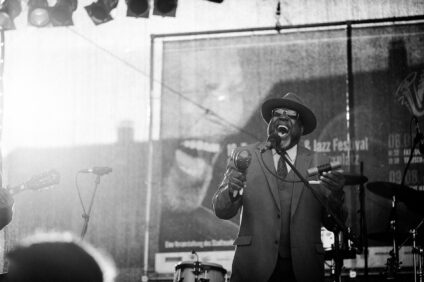Human rights and intellectual property aren’t two concepts that you’d necessarily think have anything in common. But creative works of the mind are an expression of our fundamental human rights and freedoms.
The theme of this year’s Wold Intellectual Property Day is Digital Creativity: Culture Reimagined. With digital technology at our fingertips, anyone can be a creator.
Student Attorney Ajay Baball examined the question of whether intellectual property rights are human rights, for the Hugh Wooding Law School’s Human Rights Law Clinic. Ajay’s article was published in the Law Made Simple column of the Trinidad Guardian newspaper on Monday February 22nd, 2016.
We hear about ‘Human Rights’ regularly and we seem to know a couple of them. The right to life; the right to liberty; the right to freedom of expression.
But what about a person’s intellectual property rights? Are those rights really ‘human rights’?
Human rights are those rights which you possess by virtue of being human, born free and equal in dignity. Intellectual property rights are the rights given to persons over the creations of their minds. They usually give the creator an exclusive right over the use of his/her creation for a certain period of time.
Still not sure if intellectual property (‘IP’) rights are ‘human rights’?
Well Article 27 of the Universal Declaration of Human Rights provides that: “(1) Everyone has the right freely to participate in the cultural life of the community, to enjoy the arts and to share in the scientific advancement and its benefits; and (2) Everyone has the right to the protection of the moral and material interests resulting from any scientific, literary or artistic protection of which he is the author”.
Now that we know that IP rights are human rights too, how do we protect them?
There are various types of IP rights. For instance, a copyright allows its holder/originator to have the exclusive and assignable legal right for a fixed number of years, to print, publish, film, or record literary, artistic, or musical material.
Recently in Trinidad and Tobago, there was a publicised feud on social media when an international artiste allegedly used a local photographer’s work without permission or credit being given. A public uproar ensued, “there must be some violation of the photographer’s rights?!”…
Trinidad and Tobago’s Intellectual Property Office states that “Copyright is essential to human creativity. It gives creators incentives in the form of recognition and fair economic rewards. Creators can be assured that their works can be disseminated without fear or unauthorized copying. This will help increase access to and enhance the enjoyment of our culture, knowledge, and entertainment all over the world.”
What about a person’s moral rights? The World Intellectual Property Organization (‘WIPO’) says that moral rights to a work not only belong to its author, but moral rights allow the author to take certain actions to preserve the personal link between himself and the work. In fact, the Berne Convention recognizes moral rights as having underlying rights, namely: the right to paternity and the right to integrity. The right to paternity is that right which allows an author to claim authorship of his work. The right to integrity affords an author the opportunity to object to any distortion or modification of his work among other things.
So do you have any other intellectual property rights available to you besides copyright?
Of course! There are patents, industrial designs and trademarks among others.
A patent is an exclusive right granted for an invention. A trademark is a sign capable of distinguishing the good and services of one enterprise from those of other enterprises. An industrial design constitutes the ornamental or aesthetic aspect of an article.
So what’s your take away from this article? You can be assured that you too have intellectual property rights as one of your human rights. So get creating and don’t sleep on your rights!
Students of the Hugh Wooding Law School Human Rights Law Clinic were each given the opportunity to write an article for the “Law Made Simple” column in the Trinidad Guardian newspaper.
These topics ranged from analysis of specific legislation, to general legal concepts. The aim of this exercise was to teach the students how to write about complex legal issues, for the average newspaper reader.
This article was re-published with permission from the Human Rights Law Clinic.




